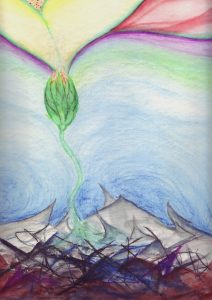
Trauma – and that doesn‘t mean only war, violence, natural catastrophes, accidents and so on, but also being depreciated and disregarded, being exposed to emotional coldness and indifference – can manifest in our body and our nervous system. If it is not relieved it can lead to all kinds of different symptoms on a body- and an emotional level. Most of the times, we only feel the symptoms or the different moods but can’t even see a connection to the original cause. We just „forgot, dissociated, put it in our unconsciousness“.
